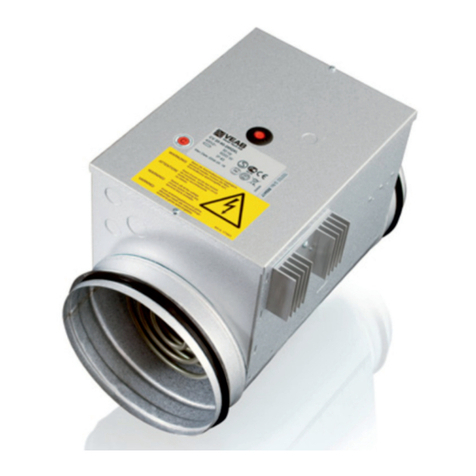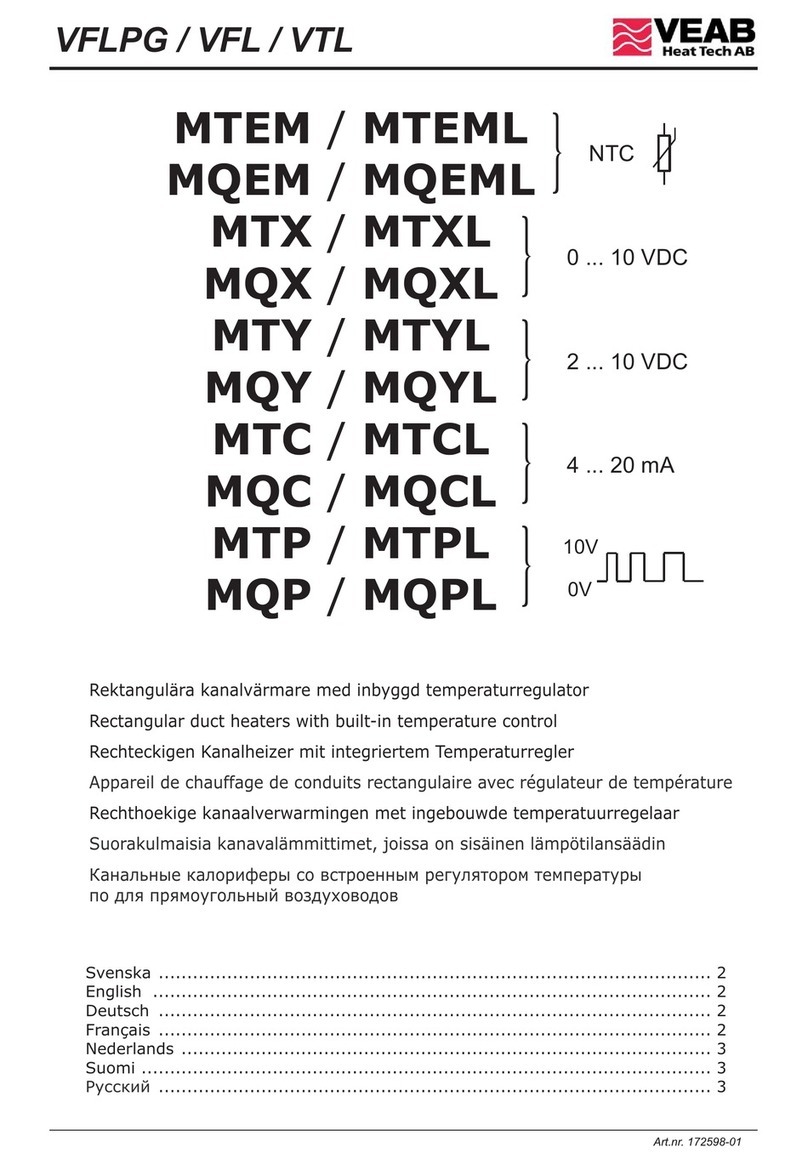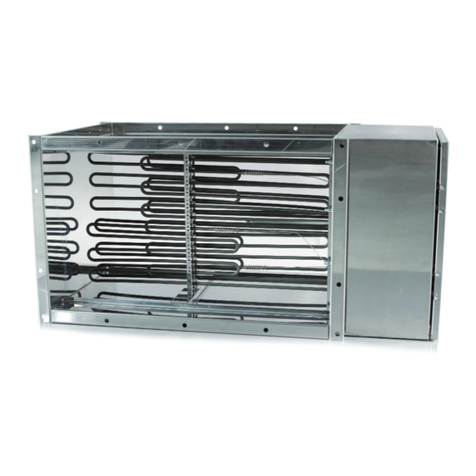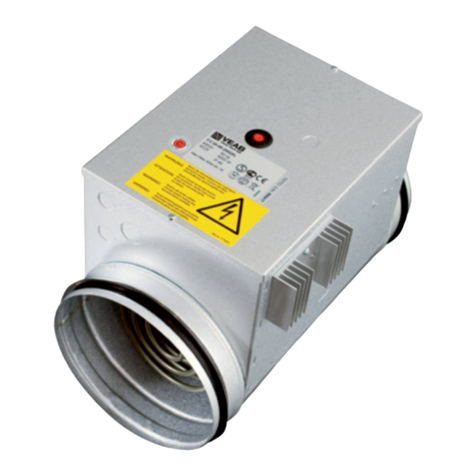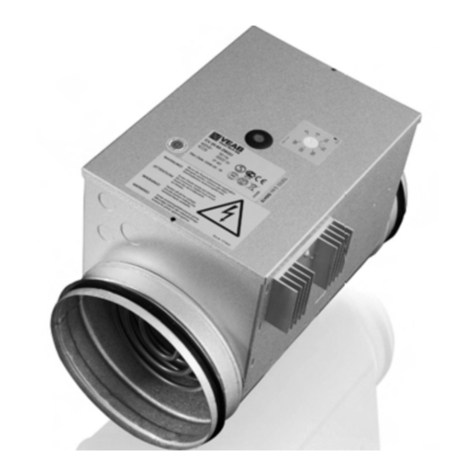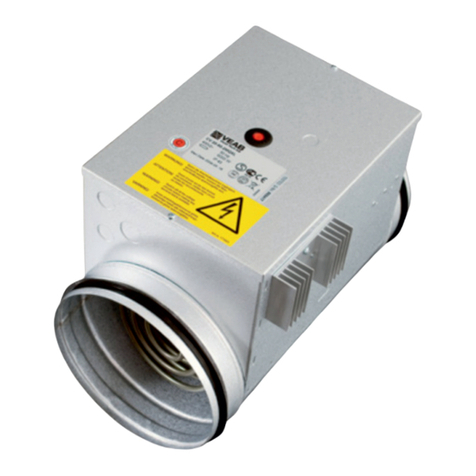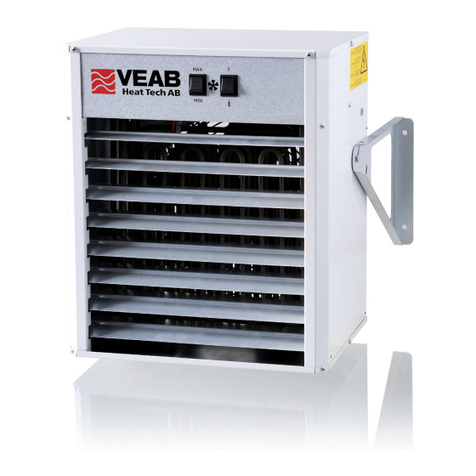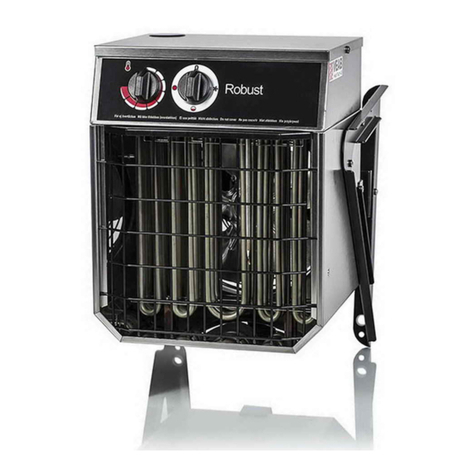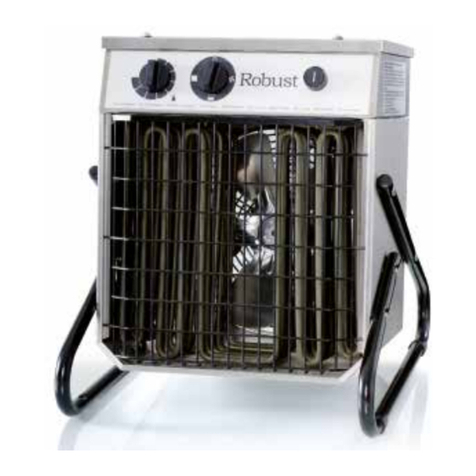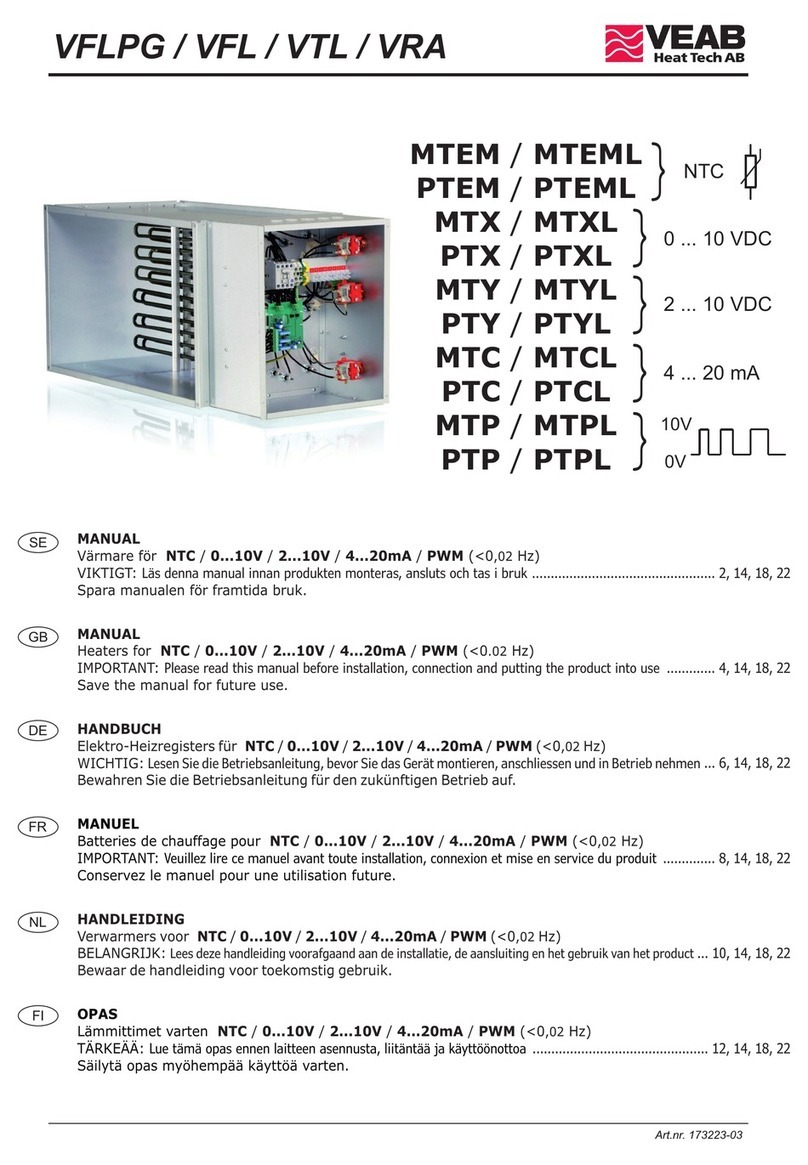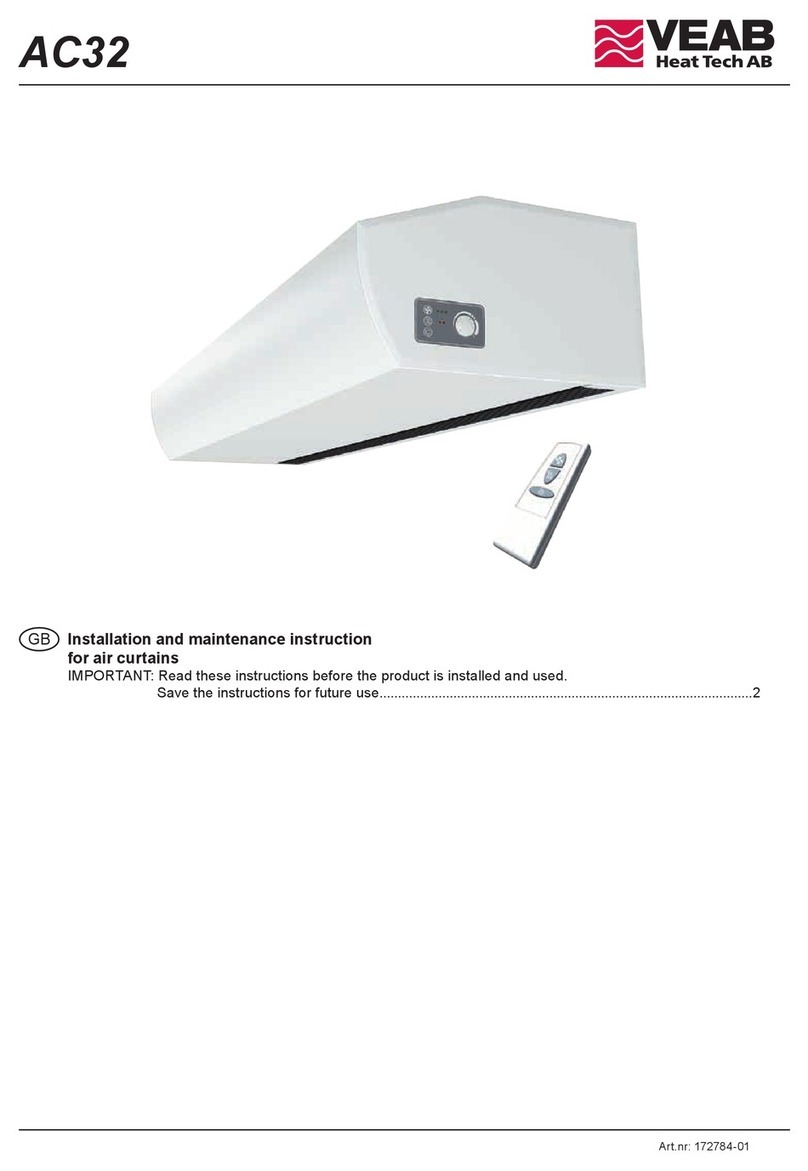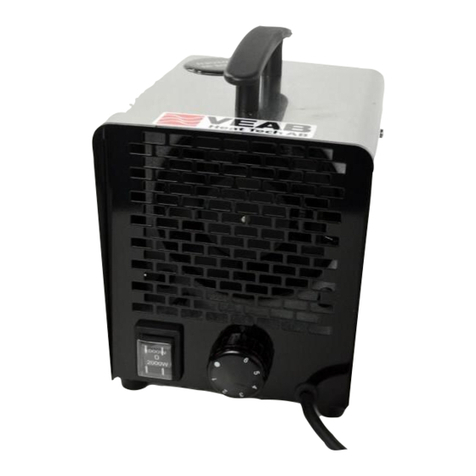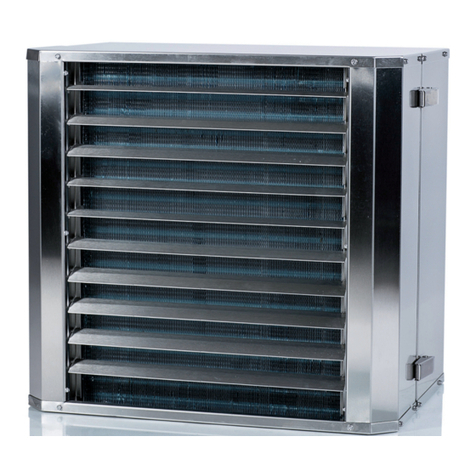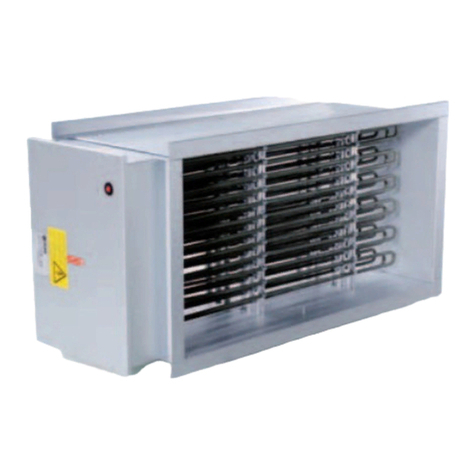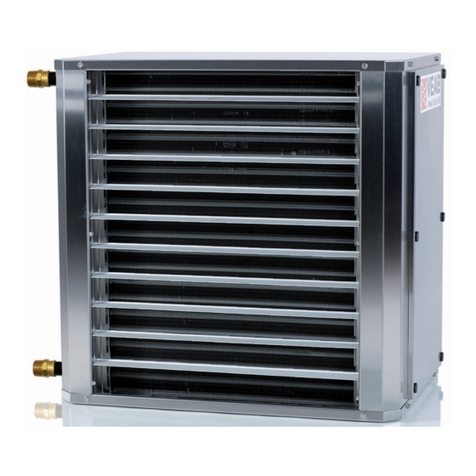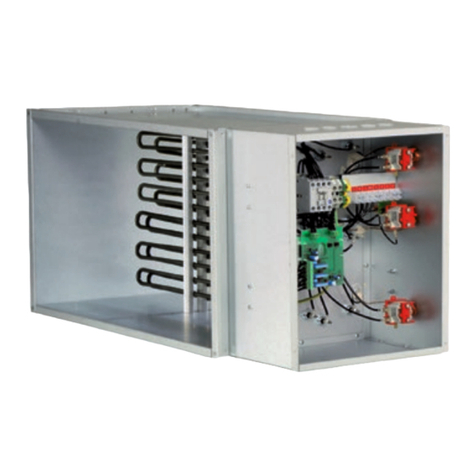
5
VFLPG/VFL/VTL/VRA
Brak grzania.
•Sprawdzić, czy został aktywowany wyłącznik przegrzania z ręcznym resetem. Jeżeli tak, wyeliminować usterkę i zresetować go.
Dalsze informacje są dostępne w rozdziale ,,Przegrzanie”.
•Sprawdzić wyłączniki przegrzania i elementy grzejne przez pomiar.
•Sprawdzić, czy bloki zaciskowe nagrzewnicy znajdują się pod napięciem sieciowym. Sprawdzić urządzenia blokujące, bezpieczniki,
przerywacze, itd.
•Odłączyć czujniki od zacisków. Jeżeli nagrzewnica się uruchomi, usterka znajduje się w zewnętrznym zespole obwodów czujnika. W
przeciwnym razie usterka znajduje się w regulatorze (pulsator/TTC).
MTX / -MTXL (-MTY / -MTYL)
MTC / -MTCL
MTP / -MTPL
•Upewnić się, że sygnał sterujący ma prawidłową biegunowość.
Pełna moc grzania bez możłiwości regulacji.
•Odłączyć okablowanie sygnału sterującego i połączyć/zewrzeć zaciski wejściowe sygnału sterującego. Jeżeli to
spowoduje wyłączenie ogrzewania, usterka znajduje się w zewnętrznym sygnale sterującym.
Brak grzania
•Sprawdzić, czy został aktywowany wyłącznik przegrzania z ręcznym resetem. Jeżeli tak, wyeliminować usterkę i
zresetować go. Dalsze informacje są dostępne w rozdziale ,,Przegrzanie”
•Sprawdzićwyłączniki przegrzania i elementy grzejne przez pomiar.
•Sprawdzić, czy bloki zaciskowe nagrzewnicy znajdują się pod napięciem sieciowym. Sprawdzić urządzenia blokujące,
bezpieczniki, przerywacze itd.
•Odłączyć okablowanie sygnału sterującego i podłączyć ogniwo akumulatora 9 V lub inne odpowiednie
ŹrÓdło napięcia jako sygnał sterujący, jeżeli typ nagrzewnicy to -MTX l -MTXL l -NITY l -MTYL l -MTP l -MTPL .
Jeżeli nagrzewnica jest typu -MTC l -MTCL, należy podłączyć szeregowo rezystor 470 z ogniwem akumulatora 9 V
jako sygnałem sterującym. Jeżeli nagrzewnica się nie uruchomi, usterka znajduje się w regulatorze (Pulser/TTC).
Podłączenie.
1.Nagrzenwicakanałowa jest wyposażona zzabezpieczenie termiczne. Ich ilość inastawa zależy od wymiarów i
intensywności użytkowania.
2.Nagrzewnica może być wyposażona wzabezpieczenie termiczne, które ma funkcję stylu przemiennego lub inaczej
przekaźnik może być uwzględniony wpodłączeniu. Alternatywnie styki lub styki przekaźnika mogą być wykorzystane w
funkcji alarmu do wskazania aktywacji zabezpieczenia termicznego. Złącza przekaźnika nie powinny być używane do
interlockingu, tylko do wskazań.
3.Nie jest rekomendowane, aby funkcja zabezpieczenia przed przegrzaniem byłakontrolowana przez obwód
elektroniczny. To musi być tak wykonane, aby odcięcie zasilania nastąpiło jeżeli zadziała zabezpieczenie termiczne.
4. Nagrzewnia możemieć kilka stopni mocy, które są przedstawione na schemacie elektrycznym umieszczonym na
wewnętrznej części pokrywy.
5.Ponieważ w nagrzewnicach typu -MTEM/-MTEML o prądzie znamionowym mniejszym lub równym 40 A zespół
obwodów elektrycznych czujnika nie jest oddzielony galwanicznie od źródła zasilania sieciowego, należy zachować
ostrożność podczas podłączania czujników/nastawy wartości zadanej ze względu na poziom napięcia sieciowego.
6.W nagrzewnicach typu -MTEM/-MTEML z napięciem sieciowym znamionowym > 415V 3- (≤ 40A) czujnik kanału
musi być przymocowany na stałe w kanale w taki sposób, aby jego wyjęcie bez narzędzi było niemożliwe; ponadto
należy zastosować czujnik pomieszczeniowy/nastawnik wartości zadanej typu TG-R930.
